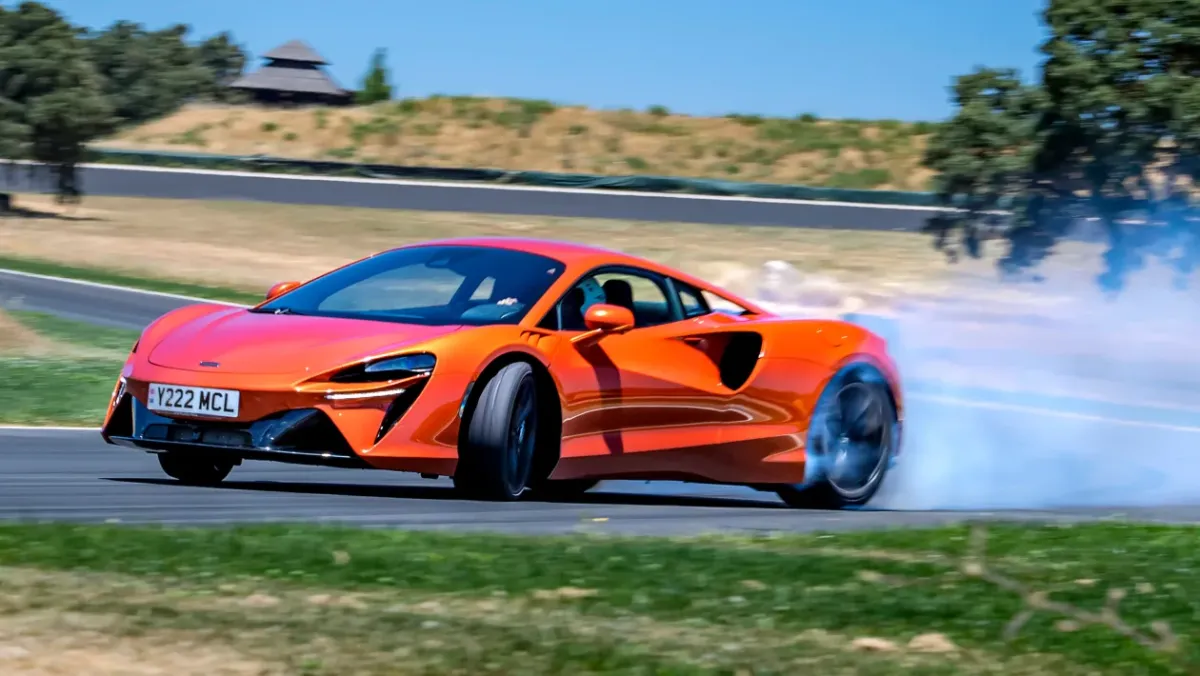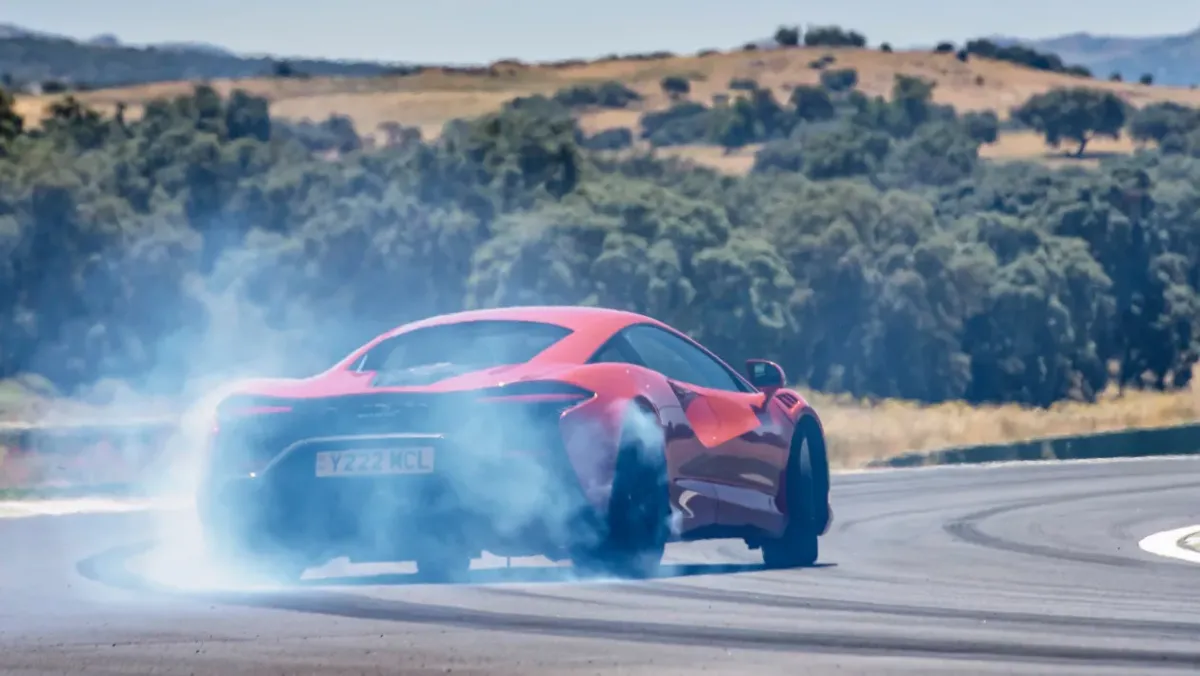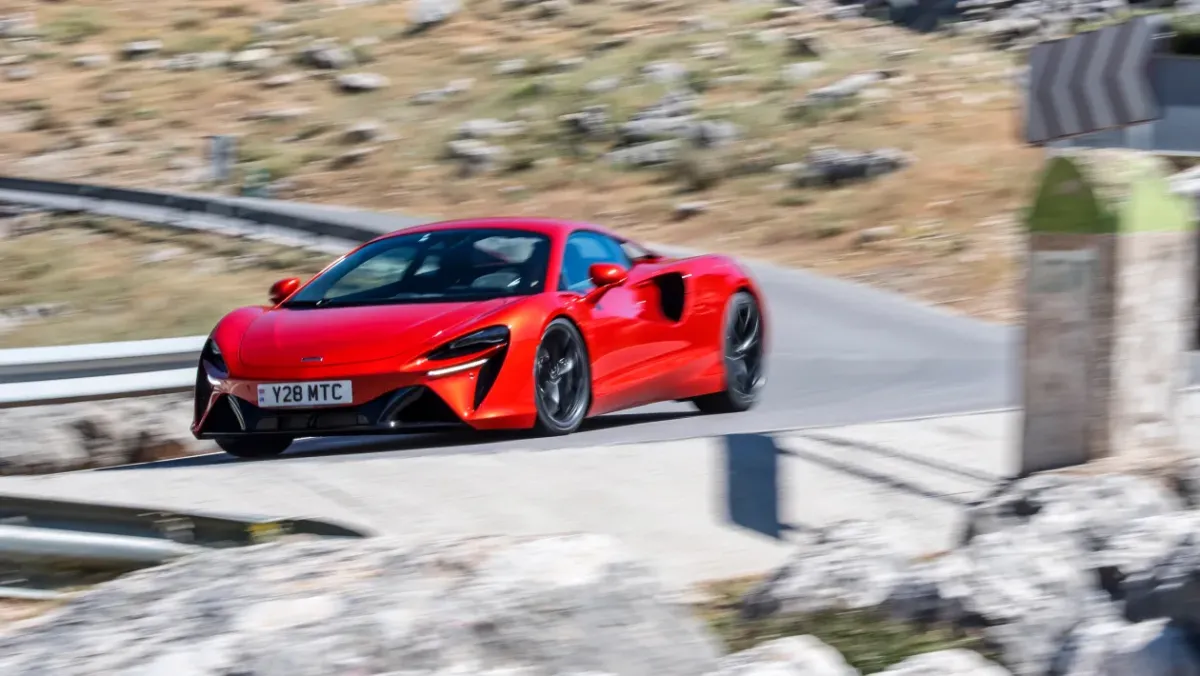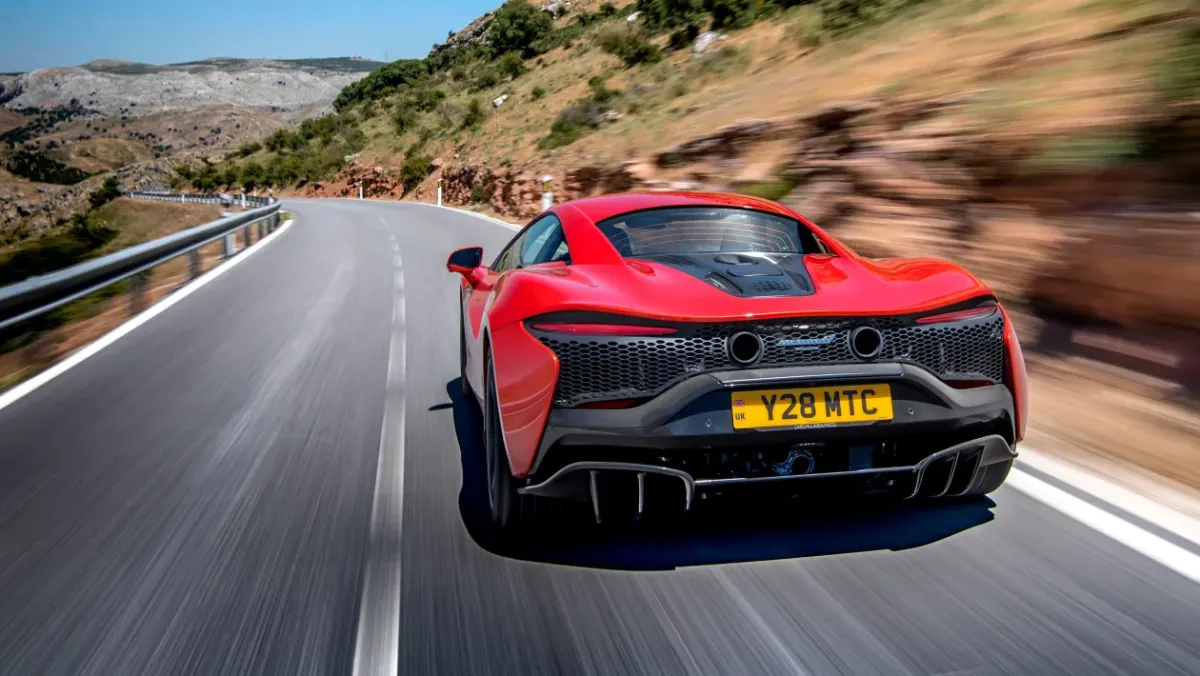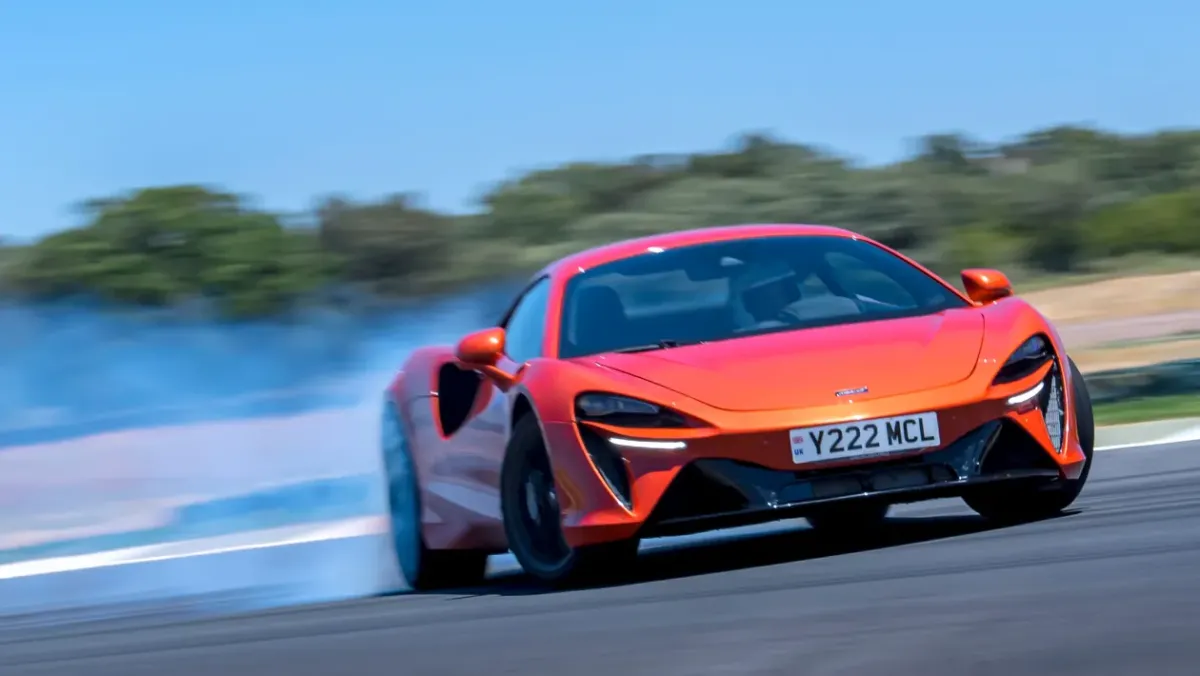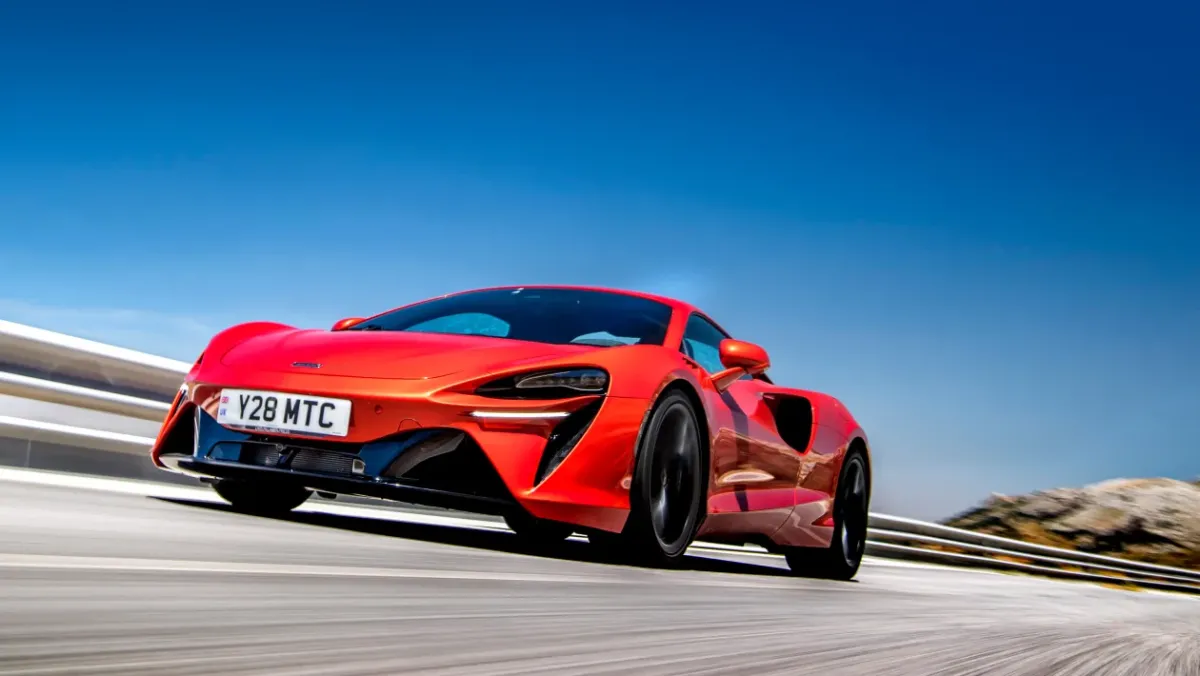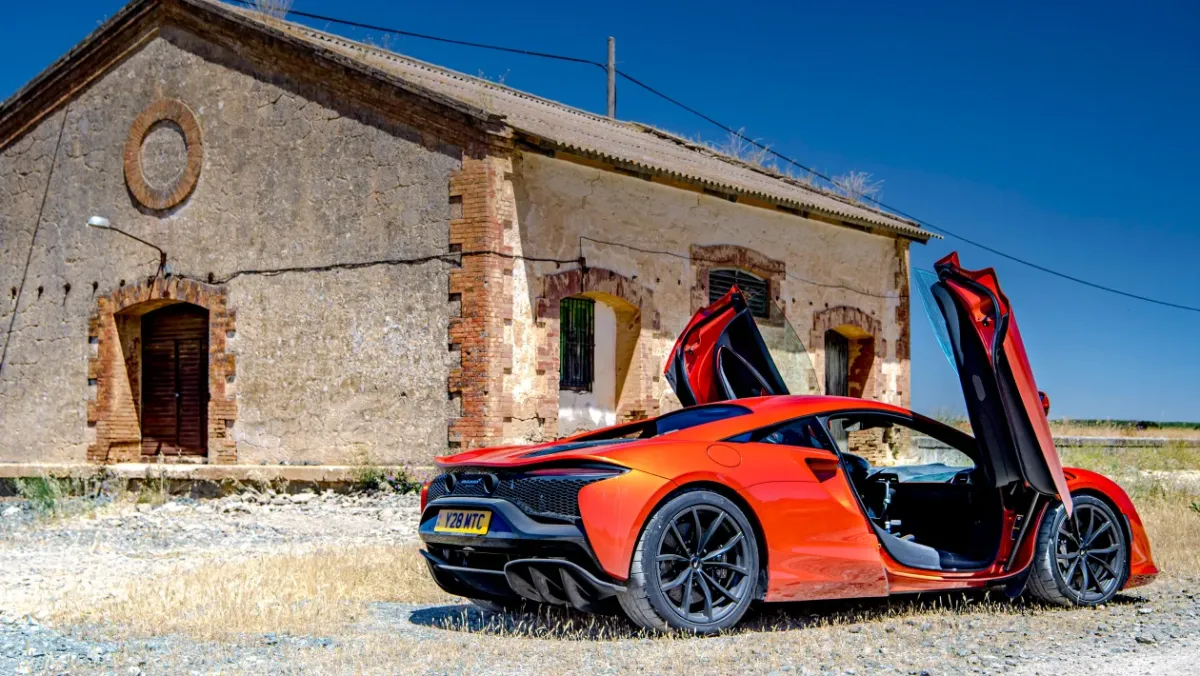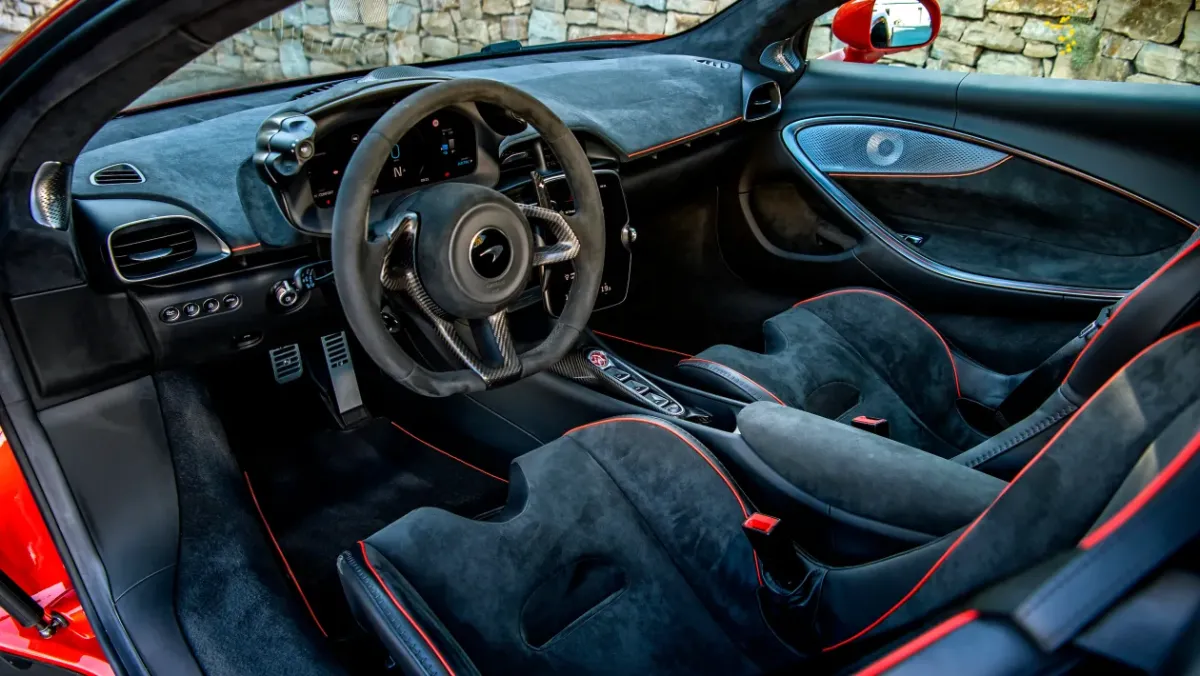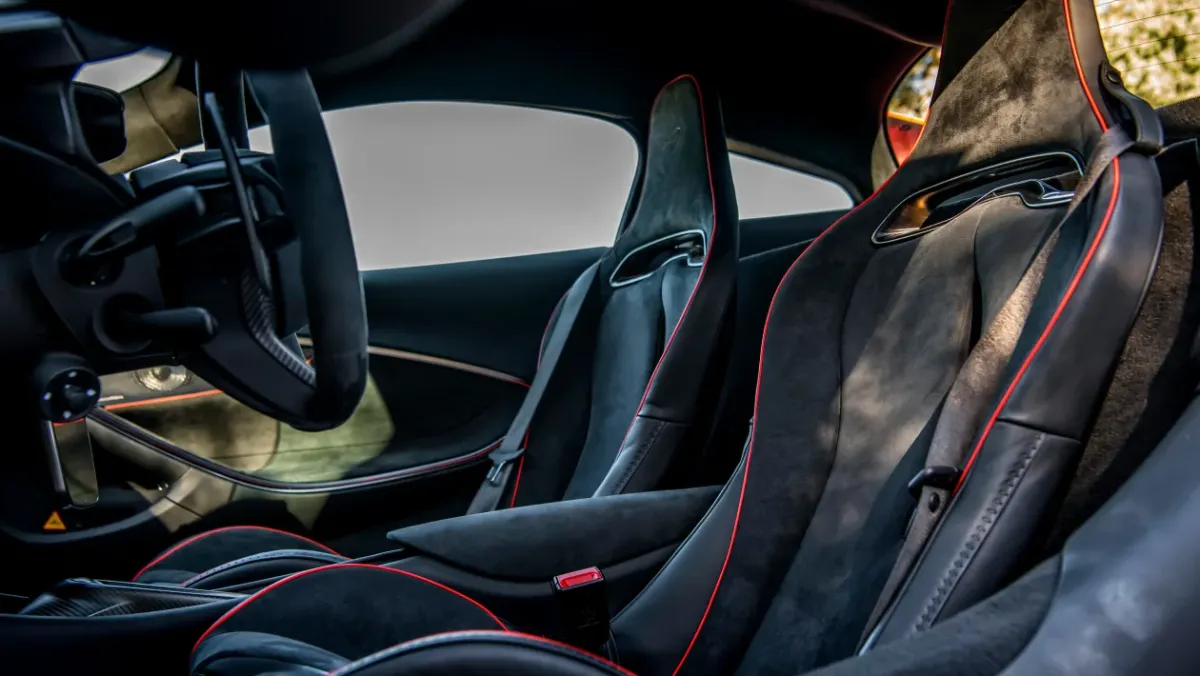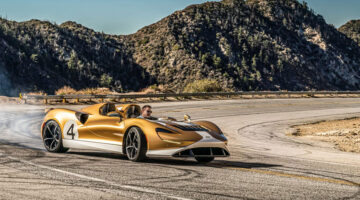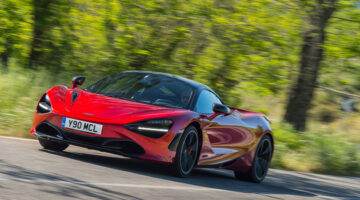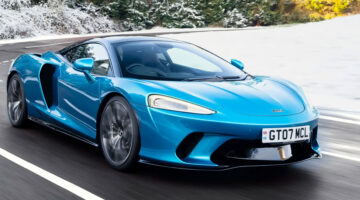Finally we’ve driven McLaren’s hot new hybrid, but has the Artura been worth the wait?
| Thumping performance, entertaining to drive | |
| Unadventurous design, engine lacks character, (big) question mark over quality |
New engine, new gearbox, new hybrid system, new chassis, new electrical architecture, new interior functionality… This is it. The start of an all-new generation of McLaren supercars. The Artura might not be a radical departure in terms of design language, but beneath the (largely superformed aluminium) skin it’s a significant step for the company and the starting point for the next chapter in McLaren Automotive’s story. To say there’s a lot riding on the $215,345 Artura would be an understatement.
In terms of raw ingredients it could hardly be more promising. The Artura is built around McLaren’s new Carbon Lightweight Architecture, comprising of a new carbon fibre monocoque designed for hybrid applications, aluminium subframes front and rear and a new lightweight domain-based ethernet electrical architecture. The monocoque itself weighs 82kg (6kg heavier than the previous chassis but it does incorporate extra functionality such as the battery compartment, aero surfaces, B-pillars and door hinge fixings).
The powertrain, developed with help from BMW, consists of a 120-degree 3-litre twin-turbocharged V6 (M630) producing 577bhp and 430lb ft and works in combination with a 94bhp e-motor incorporated into the new eight-speed dual-clutch gearbox. The new engine, once again manufactured by Riccardo, is 40kg lighter than the V8 used in the outgoing Sport Series cars.
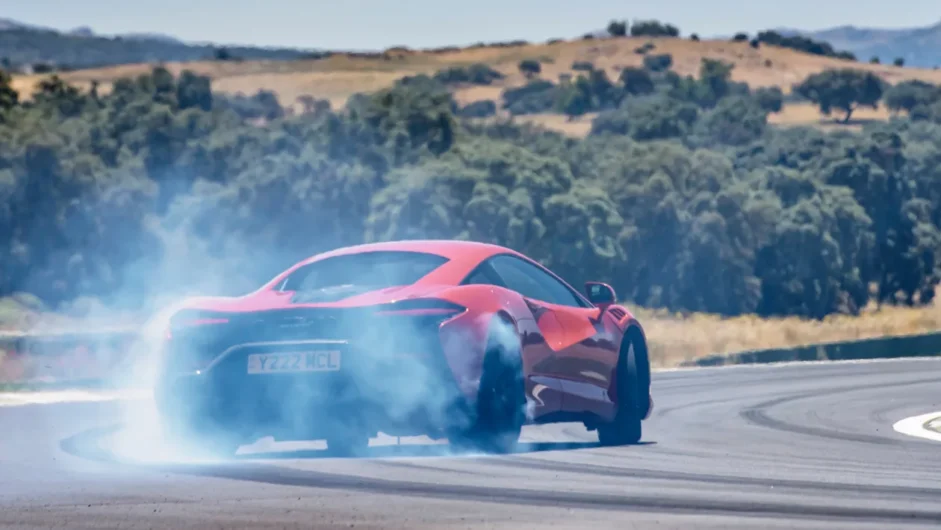
With a combined total output of 671bhp at 7500rpm and 531lb ft from 2250-7000rpm McLaren claims a top speed of 330kph and 0-100kph in 3-seconds, with an 30-kilometer electric range and 130kph top speed when running on battery power alone.
Suspension is by double wishbones at the front and features an all-new multi-link rear set-up. Dampers are continuously variable but the Artura doesn’t feature the trick hydraulically-linked system of a 720S. That new eight-speed gearbox also features an e-diff for the first time in a McLaren Automotive road car, rendering Brake Steer a thing of the past.
It feels new. The fantastic driving position and sense of space thanks to the superb view ahead might be familiar but the Artura is clearly a step change. It rides more quietly and while the steering is heavier than expected the feedback is much cleaner, the texture of the road surface, which used to shimmy and fizz through the steering wheel, is now soothed away. This is a still a hydraulically-assisted rack and the feedback that remains is high quality, but there’s no question you feel a little more removed from the contact patch created by the standard Pirelli P Zero Cyber tyres (235/35xZR19s on the front, 295/35xZR20s on the rear) that provide the driver with data above and beyond temperatures and pressures.
The little V6 seems to cover all the bases. Boosted by the electric motor there’s precise and immediate throttle response and the high-gear/low-rev response is pretty amazing. Yet it revs out to 8500rpm cleanly and never feels stretched in so doing. However, whereas something like the Maserati MC20 or Ferrari 296GTB celebrates the twin-turbochargers with a whooshing, fluttering soundtrack, the Artura hides it away.
That wouldn’t be such as shame but the ‘purer’ remaining noise isn’t exactly spine-tingling. The engine note actually feels oddly synthesised and its character doesn’t grow or alter with revs or load. There’s certainly none of the top-end fireworks of a 720S or even the edge and excitement of the old Sports Series cars. It feels just a little too restrained. No such complaints about the ‘box, which hits hard and clean. Quite why a supercar with eight gears needs to do over 120kph in 2nd and nearly 177kph in 3rd is a bit of a mystery, though.
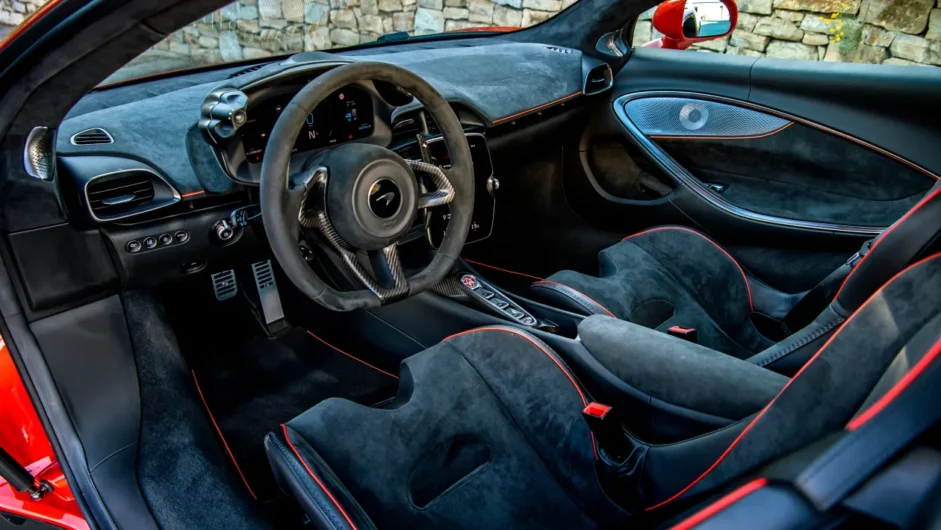
Having said that, performance itself borders on the outrageous. No matter the road speed or gear selected, the Artura really does get going and the acceleration just keeps coming. The brakes have a longer travel pedal than, say, a Lamborghini or Ferrari, but they feel optimised for left-foot braking and stay very consistent on the road; I really like the set-up. Once past e-mode there are Comfort, Sport and Track settings for Handling and Powertrain, operated via rocker switchers on top of the instrument binnacle and within easy reach of the steering wheel (the binnacle itself moves with the steering column so this remains a constant no matter your driving position). Comfort is extremely supple but for me Sport brings a better level of connection. For the Powertrain I can’t see why you wouldn’t just go full Track…
Dynamically the Artura is ultimately very well sorted. The heavier than expected steering erodes the impression of agility, which seems odd as the Artura has strived to retain McLaren’s lightweight heritage despite 130kg of hybrid baggage to carry around. At 1498kg DIN (all fluids plus 90-percent fuel load) it’s only a shade heavier than Ferrari’s 296GTB is dry and when fitted with lightweight options. The Ferrari isn’t strictly a rival but has a similar philosophy, so it’s a valid comparison in this capacity. Even the pure ICE Maserati MC20 is only 23kg lighter.
But whilst is lacks the immediate and addictive sense of low mass and inherent agility of, say, a 600LT, the Artura is hugely entertaining. The new e-diff is really impressive and oversteer is there for the taking pretty much any time you want it, at the limit and beyond (easily accessible thanks to the brilliant Variable Drift Control) it’s wonderfully controllable and so settled. It really does indulge the driver. For those less confident the Artura has a small understeer safety zone built-in… again this slightly erodes the immediacy of the car but it does create real confidence from the off.
There’s much more to say about this car, much of which you’ll find in our video – which features both road and track driving. Incidentally, the Artura’s slight detachment almost entirely disappears on track, where it’s really good fun and extremely sharp.
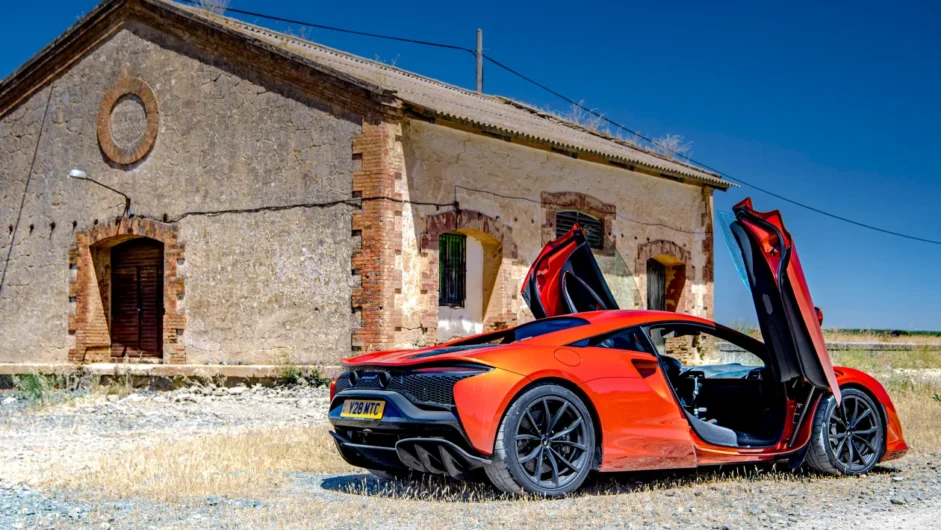
Price and rivals
At $215,345 the Artura is head-to-head with the surprisingly brilliant Maserati MC20 and priced in between the bargain Huracan EVO RWD ($187,115) and the new Technica model (circa $245,000). The F8 Tributo costs around $231,000.
Early impressions suggest that Artura is trying to cover all the bases. It genuinely is remarkably refined and useable but on track there’s real ability. However, the bigger question remains whether customers want quite such a calm, mannered McLaren for day-to-day use. The tiny numbers of McLaren GTs finding their way to customers suggest maybe not. Yet people are queuing out of the door for LTs of any description… So why not inject a bit more of that character into the mainstream line-up?
The biggest impediment for the Artura might not be a rival car at all. Despite myriad delays and a cancelled press launch back in September of last year, many of the cars on this event were suffering from software glitches with a few succumbing to more serious mechanical failures. With McLaren’s reputation for reliability already not exactly worrying Toyota, this is a real concern.
The official party line is that software issues will be sorted in time for customer deliveries, however, those cars will be reaching owners very, very soon. If there genuinely was a silver bullet to fix the problems we encountered, why would it not be available for cars being driven for its international launch? New CEO Michael Leiters starts at McLaren on July 1st. We hope his appointment and the subsequent culture change is as radical as the Artura’s Carbon Lightweight Architecture.
This article originally appeared at evo.co.uk
Copyright © evo UK, Autovia Publishing

